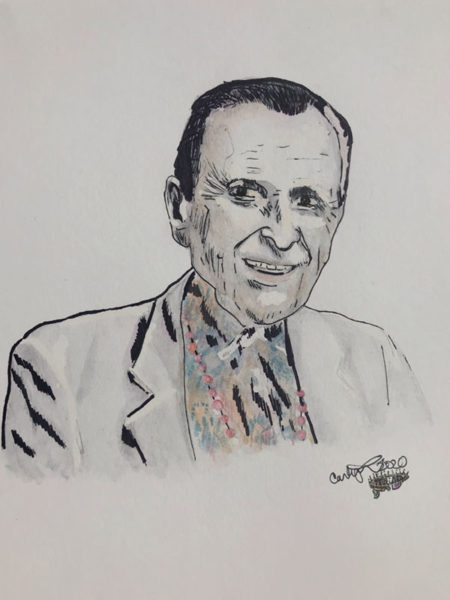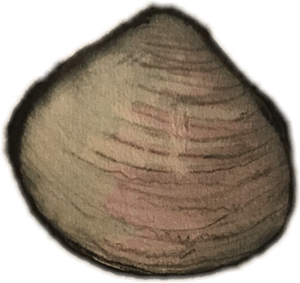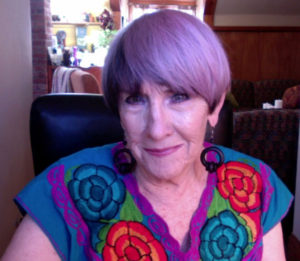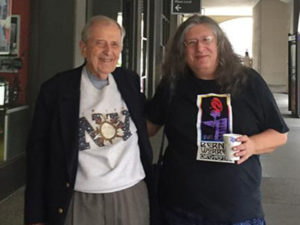
 Stanley Krippner’s life and work continues to unfold. He is one of the last living icons of the counter-culture (out of which his multidisciplinary research interests emerged). Just to give one example, Humanistic Psychology began as a protest group that was formed in opposition to Behaviorism (DeCarvalho, 28-30, 1990). Today humanistic psychology (while it still cannot fully claim to be part of the mainstream) is a well-established division in the American Psychological Association. In addition to his pioneering contributions to humanistic psychology, Krippner has contributed to parapsychology, shamanism and curandemismo healing arts, the understanding of dreams, sexual behaviors, trauma, and integrative healing; this article therefore provides a summary of his extensive and extraordinary career. During his quite active career Krippner has authored three books, co-written approximately 23, edited four, and co-edited 18 more books. On top of those contributions he has written over 1,000 articles, chapters in edited books, and provided book reviews to support numerous other authors. In short, Dr. Krippner has had a lot to say and his wisdom has gifted many a conference spreading far and wide from nations in South America to India, Russia and numerous countries in between. He has memberships in a wide variety of organizations. He has presented the knowledge gleaned from these various paradigms to sections of the American Psychological Association, thereby expanding awareness of alternative healing processes. He has received over 40 awards for his numerous contributions from numerous nations around the globe.
Stanley Krippner’s life and work continues to unfold. He is one of the last living icons of the counter-culture (out of which his multidisciplinary research interests emerged). Just to give one example, Humanistic Psychology began as a protest group that was formed in opposition to Behaviorism (DeCarvalho, 28-30, 1990). Today humanistic psychology (while it still cannot fully claim to be part of the mainstream) is a well-established division in the American Psychological Association. In addition to his pioneering contributions to humanistic psychology, Krippner has contributed to parapsychology, shamanism and curandemismo healing arts, the understanding of dreams, sexual behaviors, trauma, and integrative healing; this article therefore provides a summary of his extensive and extraordinary career. During his quite active career Krippner has authored three books, co-written approximately 23, edited four, and co-edited 18 more books. On top of those contributions he has written over 1,000 articles, chapters in edited books, and provided book reviews to support numerous other authors. In short, Dr. Krippner has had a lot to say and his wisdom has gifted many a conference spreading far and wide from nations in South America to India, Russia and numerous countries in between. He has memberships in a wide variety of organizations. He has presented the knowledge gleaned from these various paradigms to sections of the American Psychological Association, thereby expanding awareness of alternative healing processes. He has received over 40 awards for his numerous contributions from numerous nations around the globe.
Asking Krippner in a personal interview what the most significant experience of this life was he simply responded, “My birth,” but one has to wonder what early life circumstances could have contributed to his heroic life journey. Krippner went on to share that he was plagued with a speech impediment as a young child. He had been teased by peers due to a speech defect manifesting in a frontal lisp. Even though public speaking was difficult, he confronted it and bravely entered a speech club, presenting a short monologue in a contest. He was then taught to place his tongue behind his teeth in order to make a perfect “s” sound. This simple trick healed the problem instantaneously after years of struggle to express himself and to feel accepted by peers. This spontaneous success inspired him and led toward his first career, which was to help others suffering with speech defects.
Alfred Adler (1870-1937) believed that significant early life experiences can later lead to related career choices. Obviously, this has been evidenced in Krippner’s life given the untold number of speeches in numerous conferences and fields throughout the world. His life has been a series of explorations and without a doubt is one that has provided service in vital areas going beyond traditional diagnostic psychology into explorations of the validity of psychic events, healing, shamanic phenomena, meaning of dreams, and personal mythologies.
A chapter authored by Krippner and Jeanne Achterberg notes how:
Western biomedicine would consider [sic, explain] anomalous [healing] experiences as lucky coincidences even though similar stories have been widely reported over millennia. . . . These belief systems are still maintained by some groups of people, and indigenous medical practitioners still service about [sic, over] three fourths of the world’s population (Mahler, 1977). Yet, in the West and [in] other [industrialized societies]. . . allopathic biomedicine has become the dominant curative paradigm. . . . As a result, reported healing behaviors and experiences that deviate from this paradigm [when they are not denounced as superstitious fakery, are often regarded as being at variance with] biomedical diagnosis, prognosis, and treatment (p. 354).
In sum, this chapter discusses anomalous healing experiences, including their definition, phenomenological and experiential characteristics, biological markers, and psychophysiological characteristics, individual differences, after effects and outcomes, therapeutic potentials, and risks, and physiological, psychological, and parapsychological explanatory models.
Krippner knew there was much to explore in these areas. Such interests were stimulated early in his academic education when a university advisor suggested Stanley explore the integrative studies program. Thus, he began the explorations into philosophy and a liberal education offering a sound foundation for all that was to come. It is significant to add that Krippner himself was not a stranger to psychic phenomena as his own extrasensory experiences had begun early in childhood. Therefore, it was not surprising that Krippner would later do a significant amount of research and writing on psychic phenomena, parapsychological experience, shamanism and healing.
One early significant and influential observation began with a Mentalist (Dr. Ryan) who had made himself available for guest appearances. Krippner’s keen observations noted the man was using “sleight of hand.” Although Dr. Ryan had been invited to speak, many psychologists believed it would be a disgrace to have him on campus. It was a sellout performance. This also had a big impact on Krippner’s developing career in researching phenomenon and eventually led to the first edition of Varieties of Anomalous Experience: Examining the Scientific Evidence (2000). This edited book acknowledged auditory and visual hallucinations, synesthesia (for example, hearing colors and seeing sounds), lucid dreaming, out of body experiences, psi-related phenomena, past lives, near death experience, alien abductions, mystical knowing, and anomalous healing capabilities validating each as being worthy of study and research. The original (2000) and later edition (2014) were published by the American Psychological Association, supporting Krippner’s intention to validate such experiences through scientific investigation.
His ten years of study in a dream lab led to results that have been subjected to analysis and have always provided positive results. Dream telepathy studies have been replicated, and metanalysis study has not disagreed with gender differences in dreams in numerous countries. One example, in editing the article “A Preliminary Study on English and Welsh Sacred Sites and Home Dream Reports” (Devereux, Krippner, Tartz, & Fish, 2007) Jennifer Armstrong noticed gender differences in dream content at Madron Well in England; this site is specifically identified and its statistical findings are discussed in (Devereux, et al: 17-21, 2007). This had not been noticed in the initial analysis, and Krippner was grateful to learn about these differences when I (Schroll, the other reviewer) pointed them out; leading to the specific comment in this article that future studies needed to obtain samples large enough to check for gender differences (p. 19). Krippner added it was a good decision that I chose Armstrong as the other reviewer. Krippner also reminded Schroll that Madron Well was associated with feminine energy, and until the early 17th century a local wise woman attended the actual spring.
Considerable attention has been given to his (Krippner’s) co-authored book with David Feinstein titled Personal Mythology: The Psychology of Your Evolving Self (Feinstein & Krippner, 1988) as well as their revised edition titled The Mythic Path: Discovering the Guiding Stories of Your Past—Creating a Vision for Your Future. Both of these books offered positive and empowering processes for examining events occurring in our lives. Given psychology’s emphasis on a continuously widening array of mental diagnoses, these processes enhance Carl Rogers and Abraham Maslow’s efforts toward a more positive perspective and treatment of human difficulties. Life necessitates heroic responses encouraging human development on multiple levels. This wisdom supports Krippner’s writings, speeches, and associations.
He introduced the American Psychological Association to his research on shamanism, introducing psychologists to its diverse healing methods. It began with a course on the foundation for indigenous societies in the Amazon during the 1950s at Northwestern University. The study of indigenous cultures has been on his radar for many years leading to travel into the Amazon, Indonesian rainforests, and the like in order to meet, study, and learn from indigenous leaders and healers. This included explorations in psychedelic medicines, such as Ayahuasca.
Although Krippner is widely acknowledged for his research and his numerous publications, many of his friends and colleagues recognize that he is a very special friend to all he knows. Let me give a couple of personal examples. Around 2004 I (Mijares) invited Krippner to contribute a chapter for The Psychospiritual Clinician’s Handbook: Alternative Methods for Understanding and Treating Mental Disorders (Mijares & Khalsa, 2005). He immediately responded that he had someone in mind to co-author the chapter with him, putting himself as the second author. This is typical of Krippner as he supports the works of other authors. Another example of this is the co-authored book with Sidian Morning Star Jones, the grandson of the late Rolling Thunder. Rolling Thunder and Krippner were longtime friends, and Rolling Thunder often acted as a guide for Krippner’s explorations in shamanic healing practices. To honor his longtime friend with this book, Krippner worked with Sidian Morning Star and, together, they were able to present a beautiful illustration of Rolling Thunder’s history.
Stanley Krippner is a friend to many. He has devoted his career to researching and validating significant human phenomena, but he has also devoted his time and efforts to being a very good friend to many colleagues and friends. This is evidenced in the above examples of co-authoring articles, book chapters, and books, but it is also seen in his availability to all.
In closing, much more could be said about Krippner’s life and work. We did not even mention the long association Krippner had with Montague Ullman. It was Ullman who created the dream telepathy lab at Maimonides Medical Center. Krippner gave his full support and encouragement to the time that needed to be invested in my transcription, and subsequent editorial analysis of my March 26, 2008 interview with Ullman, which took place at his home in Ardsley, New York. Ullman was (at this time) recovering from a mild stroke he had suffered ten days earlier. The definitive assessment of Ullman’s work is titled “Bohm’s Influence on Ullman’s Theory of the Origin of Dreams: Reflections and Insights from Ullman’s Last Interview” (Schroll, 2016). In response to those that may be thinking they never heard Ullman mention Bohm, Krippner knows that Ullman devoted his time during the last days of his life to this topic. Why did Ullman rarely mention Bohm? Because it is a very complex and theoretical topic that has nothing to do with Ullman’s method of dream interpretation; a full discussion of Ullman and his association with Krippner will be taken up in a future article (see also Schroll, 2010).
Conclusion
This brief summary of Krippner’s legacy has to a large extent documented his many contributions that represent a career which has focused on transforming his counter cultural activities and explorations into areas of mainstream scientific inquiry. Often, we forget the real importance of exploring various nonordinary states of reality is that our understanding of them improves our appreciation of ordinary reality. Experiencing these states (including dreaming which is the most assessable nonordinary state to everyone) and bringing back this knowledge and wisdom—provides us with insightful guidance to help us remember that every moment of life is extraordinary. Often it is said children have this awareness, yet the difference is children have nothing to compare having this awareness, and by the time they do have this awareness they have forgotten how extraordinary ordinary reality is. Remember this the next time someone is describing an experience of nonordinary reality and ask how this knowledge helps to navigate and improve the conditions of our daily life.
References
Cardeña, E., Lynn, S.J. & Krippner, S. (Eds.). (2000). Varieties of anomalous experience: Examining the scientific evidence, First Edition. Washington, DC, US: American Psychological Association.
DeCarvalho, R-J. (1990). A history of the “third force” in psychology. Journal of Humanistic Psychology, 30(4), 22-44.
Devereux, P., Krippner, S., Tartz, R. & Fish, A. (2007). A Preliminary Study on English and Welsh Sacred Sites and Home Dream Reports. Anthropology of Consciousness, 18(2), 2-28. Reprinted in Mark A. Schroll (Ed.) Transpersonal ecosophy, Vol. 1: Theory, methods, and clinical assessments. Llanrhaeadr-ym-Mochnant, U.K.: Psychoid Books. (Distributed by Lulu Press).
Feinstein, D.& Krippner, S. (2007). The mythic path: Discovering the guiding stories of your past—creating a vision for your future. New York: Jeremy P. Tarcher, Inc.
Feinstein, D.& Krippner, S. (1988). Personal mythology: The psychology of Your evolving self. New York: Jeremy P. Tarcher, Inc.
Jones, Sidian Morning Star & Krippner, S. (2013). The Voice of Rolling Thunder: A Medicine Man’s Wisdom for Walking the Red Road. Rochester, Vermont: Bear & Company.
Kleinplatz, P.J. & Kripper, S. (2005). Sexuality and spirituality: Celebrating erotic transcendence and spiritual embodiment. In Sharon Mijares and Gurucharan Singh Khalsa’s (Eds.) The psychospiritual clinician’s handbook: Alternative methods for understanding and treating mental disorders (pp. 302-318). New York: Routledge Mental Health.
Krippner, S., & Achterberg, J. (2014). Anomalous healing experiences. In E. Cardeña, S. J. Lynn, & S. Krippner (Eds.), Dissociation, trauma, memory, and hypnosis series. Varieties of anomalous experience: Examining the scientific evidence, Second Edition (pp. 273-301). Washington, DC, US: American Psychological Association. http://dx.doi.org/10.1037/14258-010
Mahler, H. (1977, November). The staff of Aesculapius. World Health, p. 3.
Schroll, M. A. (2010). The physics of psi: An interview with Stanley Krippner. Transpersonal Psychology Review, 14(1), 3-15.
Schroll, M. A. (2016). Bohm’s Influence on Ullman’s Theory of the Origin of Dreams: Reflections and Insights from Ullman’s Last Interview (pp. 491-511). In M. A. Schroll (Ed.), Transpersonal ecosophy, Vol. 1: Theory, methods, and clinical assessments. Llanrhaeadr-ym-Mochnant, U.K.: Psychoid Books. (Distributed by Lulu Press).

 Sharon G. Mijares, Ph.D., is a licensed psychologist and the director of the psychology program at the California Institute for Human Science. She also teaches at National University and Brandman University. She has created seven books, the latest being The power of the feminine: Facing shadow Evoking light (in press). Dr. Krippner has contributed to two of her edited books. www.psychospiritual.org
Sharon G. Mijares, Ph.D., is a licensed psychologist and the director of the psychology program at the California Institute for Human Science. She also teaches at National University and Brandman University. She has created seven books, the latest being The power of the feminine: Facing shadow Evoking light (in press). Dr. Krippner has contributed to two of her edited books. www.psychospiritual.org
 Mark A. Schroll, Ph.D., is an independent author that has lectured with Stanley Krippner at 13 conference events, co-authored three academic articles with Krippner, and an extensive article-length interview with Krippner (Schroll, 2010). Author of 39 peer reviewed academic articles, 14 book reviews, the book Ecology, Cosmos and Consciousness (Ed.) (2018), Guest Editor Anthropology of Consciousness, 2005:16(1), 2011:22(1); Special Topics Editor International Journal of Transpersonal Studies, 30(1-2), 2011; Co-editor Paranthropology: Journal of Anthropological Approaches to the Paranormal, 4(1), 2013, Guest Editor Paranthropology, 5(4), 2014, and 8(1), 2017. Email: schroll2019@gmail.com.
Mark A. Schroll, Ph.D., is an independent author that has lectured with Stanley Krippner at 13 conference events, co-authored three academic articles with Krippner, and an extensive article-length interview with Krippner (Schroll, 2010). Author of 39 peer reviewed academic articles, 14 book reviews, the book Ecology, Cosmos and Consciousness (Ed.) (2018), Guest Editor Anthropology of Consciousness, 2005:16(1), 2011:22(1); Special Topics Editor International Journal of Transpersonal Studies, 30(1-2), 2011; Co-editor Paranthropology: Journal of Anthropological Approaches to the Paranormal, 4(1), 2013, Guest Editor Paranthropology, 5(4), 2014, and 8(1), 2017. Email: schroll2019@gmail.com.